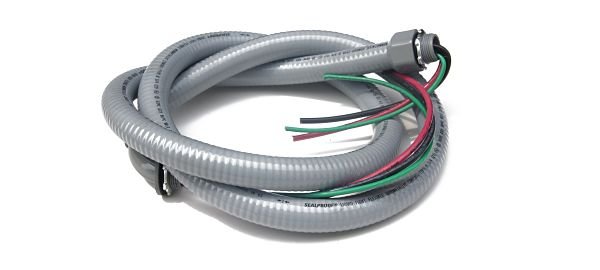Table of Contents
In the HVAC industry, the reliability and safety of electrical connections are paramount. One critical component in this equation is the HVAC whip, a prefabricated conduit assembly that links the outdoor air conditioning unit to its electrical power source. While it may seem like a small part of a larger system, choosing the right HVAC whip can have a significant impact on the success and longevity of your installation. To help you make an informed decision, here are the top three factors to consider when selecting HVAC whips for your project.

1. Material Quality and Durability
The first and perhaps most crucial factor to consider when choosing HVAC whips is the quality and durability of the materials used. Since these whips are often exposed to harsh outdoor conditions, it’s essential that they are built to last. Look for HVAC whips made from high-quality, weather-resistant materials that can withstand extreme temperatures, moisture, and UV exposure.
For example, non-metallic whips, such as those made from flexible PVC, offer excellent protection against corrosion, which is especially important in humid or coastal environments. Metal whips, on the other hand, provide higher strength but may be susceptible to rust if not treated with the proper coatings. Opt for a product that offers both flexibility and long-term durability to ensure a reliable connection in any environment.
Key Takeaway: Choose HVAC whips that are designed to handle the specific environmental challenges of your installation site, and ensure they are made from premium materials for maximum longevity.
2. Compliance with Industry Standards and Certifications
In the HVAC industry, safety and compliance are non-negotiable. One of the most critical factors to consider when selecting HVAC whips is whether they meet the necessary safety standards and certifications, such as UL (Underwriters Laboratories) or ETL (Electrical Testing Laboratories) listings. These certifications indicate that the whip has been rigorously tested to meet safety and performance requirements.
Using HVAC whips that meet these certifications ensures that your installation complies with local building codes and electrical standards, which can prevent delays or rework due to failed inspections. Additionally, certified products offer peace of mind for both installers and property owners, as they reduce the risk of electrical hazards and system malfunctions.
Key Takeaway: Always verify that the HVAC whips you choose are UL or ETL certified to meet safety and regulatory standards for your project.
3. Ease of Installation and Flexibility
Time is money in any HVAC project, and choosing components that streamline the installation process can save both. High-quality HVAC whips are designed for quick and easy installation, reducing the need for custom wiring or on-site modifications. Prefabricated whips, which come pre-cut and pre-wired, are particularly valuable in this regard, as they eliminate the guesswork and minimize installation time.
Another aspect to consider is the whip’s flexibility. The whip should be flexible enough to bend around obstacles without compromising the integrity of the electrical connection. Look for products that offer both flexibility and sturdiness, allowing technicians to install the whip in tight spaces or complex layouts without risking damage to the wires or conduits.
Key Takeaway: Opt for prefabricated HVAC whips that offer easy installation and sufficient flexibility to accommodate a variety of installation scenarios, saving you time and effort.
Choosing the right HVAC whips for your project is essential for ensuring a safe, efficient, and durable installation. By focusing on material quality, compliance with industry standards, and ease of installation, you can significantly improve the performance and reliability of your HVAC system. The next time you’re selecting HVAC whips, keep these top three factors in mind to make sure you’re choosing the best option for your project’s specific needs.

